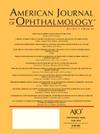Efficacy of Customized Photorefractive Keratectomy With Cross-Linking Versus Cross-Linking Alone in Progressive Keratoconus: A Systematic Review and Meta-Analysis
IF 4.1
1区 医学
Q1 OPHTHALMOLOGY
引用次数: 0
Abstract
TOPIC
This review evaluates the effectiveness and safety of combining cPRK with CXL versus CXL alone in improving visual outcomes for patients with progressive keratoconus.
DESIGN
Systematic review and meta-analysis.
CLINICAL RELEVANCE
Keratoconus leads to vision loss and affects quality of life. While CXL is the current standard for halting progression, it does not correct the visual impairment. This review explores whether adding cPRK to CXL offers better visual outcomes while maintaining the same safety, potentially refining treatment approaches.
METHODS
A systematic search of MEDLINE, PubMed, Cochrane Library and EMBASE was conducted through September 2024, following PRISMA guidelines. The initial study design aimed to include randomized controlled trials (RCTs) as well as comparative nonrandomized prospective or retrospective studies evaluating CXL+cPRK versus CXL alone, with a minimum follow-up of six months. However, only nonrandomized studies were retrieved. As a result, all included studies were assessed for the risk of bias using the ROBINS-I tool. The primary outcomes were uncorrected distance visual acuity (UDVA) and corrected distance visual acuity (CDVA). Secondary outcomes included refraction, corneal structure, and higher-order aberrations (HOA). Meta-analysis was performed using standardized mean differences (SMD) with 95% confidence intervals (CI), and heterogeneity was assessed using a random-effects model where necessary. Sensitivity analysis was conducted using a leave-one-out approach to assess the robustness of the results. This study is registered in the PROSPERO database (CRD42024594757).
RESULTS
Eight nonrandomized studies involving 731 eyes from 706 patients were analyzed. Compared to CXL alone, the combination of CXL+cPRK significantly improved postoperative UDVA (SMD = −0.39, 95% CI: −0.69 to −0.08, P = .01) and CDVA (SMD = −0.57, 95% CI: −0.96 to −0.18, P = .004), while also reducing refractive cylinder error. Additionally, CXL+cPRK led to reductions in coma, total HOA, coma-like aberrations, mean keratometry (KM), and central corneal thickness (CCT). No significant differences were observed between the groups in endothelial cell count (ECC). The rate of postoperative ectasia progression was comparable between both groups. All included studies exhibited at least one ROBINS-I domain at high risk of bias, particularly related to confounding. The heterogeneity observed in this analysis was primarily attributed to differences in surgical techniques, patient selection criteria, and study designs across the included studies.
CONCLUSIONS
Customized PRK combined with CXL provides superior postoperative visual acuity (UDVA, CDVA) and visual quality compared to CXL alone while maintaining the same corneal stability in the management of progressive keratoconus. Only nonrandomized studies could be retrieved for the purpose of the study.
定制光屈光性角膜切除术联合交联术与单纯交联术对进展性角膜炎的疗效对比:系统回顾与 Meta 分析。
本综述评估了cPRK联合CXL与单独CXL在改善进行性圆锥角膜患者视力结果方面的有效性和安全性。临床相关性:圆锥角膜导致视力丧失并影响生活质量。虽然CXL是目前停止进展的标准,但它并不能纠正视力障碍。本综述探讨了在CXL中添加cPRK是否能在保持相同安全性的同时提供更好的视觉效果,并有可能改进治疗方法。方法:按照PRISMA指南,在2024年9月之前对MEDLINE、PubMed、Cochrane Library和EMBASE进行系统检索。最初的研究设计旨在包括随机对照试验(rct)以及比较非随机前瞻性或回顾性研究,评估CXL+cPRK与CXL单独使用,至少随访6个月。然而,只检索了非随机研究。因此,所有纳入的研究都使用ROBINS-I工具评估偏倚风险。主要结果为未矫正距离视力(UDVA)和矫正距离视力(CDVA)。次要结果包括屈光、角膜结构和高阶像差(HOA)。采用95%置信区间(CI)的标准化平均差异(SMD)进行meta分析,必要时使用随机效应模型评估异质性。敏感度分析采用留一法评估结果的稳健性。本研究已在PROSPERO数据库中注册(CRD42024594757)。结果:分析了8项非随机研究,涉及706例患者的731只眼睛。与单独使用CXL相比,CXL+cPRK联合使用显著改善了术后UDVA (SMD = -0.39,95% CI: -0.69 ~ -0.08, P = 0.01)和CDVA (SMD = -0.57,95% CI: -0.96 ~ -0.18, P =0.004),同时也降低了屈光柱误差。此外,CXL+cPRK可降低昏迷、总HOA、昏迷样像差、平均角膜度数(KM)和角膜中央厚度(CCT)。各组内皮细胞计数(ECC)无显著差异。两组术后扩张进展率具有可比性。所有纳入的研究均显示至少有一个ROBINS-I结构域具有高偏倚风险,特别是与混杂相关。本分析中观察到的异质性主要归因于所纳入研究的手术技术、患者选择标准和研究设计的差异。结论:定制PRK联合CXL治疗进展性圆锥角膜,在保持相同角膜稳定性的同时,术后视力(UDVA、CDVA)和视觉质量优于单独CXL。为了本研究的目的,只能检索非随机研究。
本文章由计算机程序翻译,如有差异,请以英文原文为准。
求助全文
约1分钟内获得全文
求助全文
来源期刊
CiteScore
9.20
自引率
7.10%
发文量
406
审稿时长
36 days
期刊介绍:
The American Journal of Ophthalmology is a peer-reviewed, scientific publication that welcomes the submission of original, previously unpublished manuscripts directed to ophthalmologists and visual science specialists describing clinical investigations, clinical observations, and clinically relevant laboratory investigations. Published monthly since 1884, the full text of the American Journal of Ophthalmology and supplementary material are also presented online at www.AJO.com and on ScienceDirect.
The American Journal of Ophthalmology publishes Full-Length Articles, Perspectives, Editorials, Correspondences, Books Reports and Announcements. Brief Reports and Case Reports are no longer published. We recommend submitting Brief Reports and Case Reports to our companion publication, the American Journal of Ophthalmology Case Reports.
Manuscripts are accepted with the understanding that they have not been and will not be published elsewhere substantially in any format, and that there are no ethical problems with the content or data collection. Authors may be requested to produce the data upon which the manuscript is based and to answer expeditiously any questions about the manuscript or its authors.

 求助内容:
求助内容: 应助结果提醒方式:
应助结果提醒方式:


